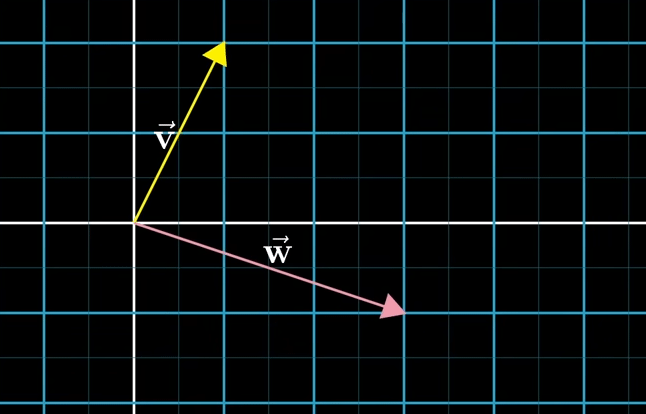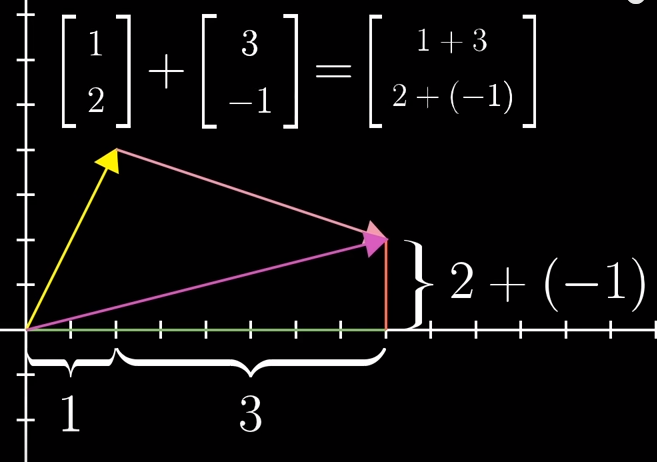Vector Addition
Input: At least 2 vectors
Output: One Vector
2D Example
vector addition is the only time we let vectors stray from origin
Vector addition is a fundamental operation in linear algebra and is widely used in technical art, particularly in computer graphics, animation, and 3D modeling. Here are some specific ways in which vector addition is applied by technical artists:
-
Positioning and Translation:
- Vector addition is commonly used to position objects in a 3D space. By adding a translation vector to the original position of an object, technical artists can move the object to a new location.
-
Animation and Motion:
- In animation, vector addition is used to represent motion and movement. By adding a displacement vector to the current position of an object over time, technical artists can create realistic animations.
-
Camera Movements:
- When manipulating the view or position of a camera in a 3D scene, vector addition is used to control the camera's translation. This is essential for panning, zooming, and tracking shots.
-
Rigging and Skeletal Animation:
- In character rigging, vector addition is employed to control the movement of joints and bones. By combining translation vectors, technical artists can create complex and natural movements for characters.
-
Particle Systems:
- In simulations and special effects, vector addition is used to model the motion of particles. Forces and accelerations are represented as vectors that are added to the particles' current velocities.
-
UV Mapping and Texture Coordinates:
- When mapping textures onto 3D surfaces, technical artists use vector addition to manipulate texture coordinates. This helps in aligning and positioning textures accurately on geometric models.
-
Lighting and Shading:
- In shading and lighting calculations, vector addition is used to determine the direction of light sources and reflections. It is essential for calculating the final color values of pixels in a rendered image.
-
Pathfinding and Collision Detection:
- In game development, vector addition is often employed in pathfinding algorithms to navigate characters through a 3D environment. It is also used in collision detection to check for intersections between objects.
-
Procedural Generation:
- Technical artists may use vector addition to control the procedural generation of landscapes or structures in a 3D environment. By combining vectors, they can define complex patterns and shapes.
-
Workflow in 3D Software:
- Vector addition is part of the everyday workflow in 3D modeling and animation software. Artists use it to position, transform, and manipulate objects within the software environment.
Understanding and effectively applying vector addition is crucial for technical artists working in 3D graphics, animation, and related fields. It provides a fundamental tool for controlling the spatial relationships and movements of objects in a virtual space.




No Comments